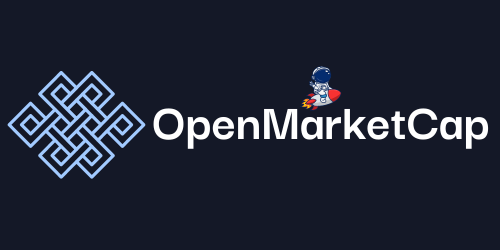Ever felt like you’re late to the crypto party? You’re not alone. While Bitcoin and Ethereum often steal the spotlight, there’s a whole universe of altcoins just waiting to be explored. Imagine diving into a treasure chest filled with diverse digital currencies, each with its own unique potential and quirks. Sounds exciting, right?
In this guide, we’ll demystify the process of buying altcoins. Whether you’re a seasoned crypto enthusiast or just dipping your toes in the water, we’ve got you covered. So, let’s roll up our sleeves and navigate this thrilling, sometimes bewildering, world of altcoins together.
Understanding Altcoins
Altcoins, or alternative coins, represent all cryptocurrencies other than Bitcoin. These digital assets offer unique features and possibilities, enriching the cryptocurrency landscape.
Definition and Examples
Altcoins include well-known options like Ethereum (ETH), Litecoin (LTC), and Ripple (XRP). Each altcoin has its own blockchain and can fulfill various functions. For example, Ethereum enables smart contracts and decentralized applications (dApps), whereas Litecoin offers faster transaction times than Bitcoin.
Types of Altcoins
- Utility Tokens: Tokens like Binance Coin (BNB) used to pay for services within a platform.
- Stablecoins: Assets such as Tether (USDT), pegged to fiat currencies, offering stability.
- Security Tokens: Represent ownership interests like stocks.
- Meme Coins: Born from internet culture, Dogecoin (DOGE) is a popular example.
Market Dynamics
Altcoin prices can be volatile, impacted by factors like market sentiment, technological developments, and regulatory news. Large movements in Bitcoin often influence altcoin performance. Diversification helps in managing investment risks.
Research Before Buying
Community support and adoption play essential roles in an altcoin’s success. Check forums, social media, and official project websites to gauge the community’s passion and vision. Institutional adoption can also drive significant price increases.
Potential Risks
Altcoins carry higher risks compared to Bitcoin. Many projects may fail, and some could be scams. Conduct thorough research and consider starting with small investments. Always stay updated with the latest market trends and regulatory developments.
Why Buy Altcoins?
Considering altcoins might seem daunting at first, but their potential rewards can be substantial. Let’s jump into the reasons why they deserve a place in our investment portfolio.
Benefits of Investing in Altcoins
Altcoins Offer Diversification
Adding altcoins to our portfolio spreads out risk. Each altcoin has unique features, providing exposure to different sectors and technologies. For instance, Ethereum’s smart contracts revolutionize various industries, whereas Ripple focuses on financial transactions.
Potential for High Returns
We’ve seen altcoins like Ethereum and Binance Coin surge in value, sometimes even outpacing Bitcoin. Early investors in these coins saw significant returns, underscoring the lucrative potential within the altcoin market.
Access to Innovative Projects
Altcoins often represent cutting-edge developments in blockchain technology. Investing in altcoins gives us a stake in these pioneering ventures. For example, Polkadot aims to improve blockchain interoperability, a crucial step for the overall ecosystem.
Community and Development Support
Many altcoins boast robust communities and active development teams. Engaged communities can drive adoption and awareness. Developers frequently update the codebase, ensuring the project evolves and adapts.
Lower Entry Points
Unlike Bitcoin which often trades at a high price, altcoins usually have lower entry points. Lower entry points make them more accessible to a broader range of investors and could be appealing for those starting with smaller investments.
Risks Associated with Altcoins
Volatility and Market Fluctuations
Altcoins can exhibit extreme volatility, making their prices unstable. For example, during sudden market sentiment changes, we can witness sharp drops or spikes in value. This volatility can lead to substantial gains but also notable losses.
Potential for Scams and Failures
While many altcoins represent legitimate projects, there’s a risk of encountering scams. Projects might fail due to poor execution or malicious intent. Thorough research is crucial before we invest any funds.
Regulatory Hurdles
Regulations concerning cryptocurrencies are still evolving. Regulatory changes could impact the viability of certain altcoins. We always need to stay updated on local laws that might affect our holdings.
Liquidity Concerns
Not all altcoins have high trading volumes. Low liquidity can make it challenging to buy or sell altcoins at our desired price points. We should consider this aspect, especially if we plan to make significant trades.
Technological Risks
Blockchain technology is still in its nascent stages. Bugs, hacks, or security flaws can impact an altcoin’s project. Vigilance and staying informed about the technical structure and updates of the altcoin in question are paramount.
By weighing both the benefits and risks associated with altcoins, we position ourselves better to make informed decisions. As with any investment, knowledge and due diligence are our best tools.
Setting Up for Purchase
Getting ready to buy altcoins takes careful planning. We’ll walk you through the essential steps to ensure a smooth and secure experience.
Choosing a Crypto Wallet
First, let’s talk about crypto wallets. Think of them as your digital piggy bank, but with much more sophistication. A reliable wallet is crucial because it’s where your altcoins will live. Trust Wallet comes highly recommended, supporting multiple blockchain networks.
To set it up, follow these steps:
- Download the Wallet: Get Trust Wallet from your app store.
- Set Up the Wallet: Follow on-screen prompts to initialize the wallet.
- Secure Your Seed Phrase: Write down your seed phrase, a 12-word combination that acts as your account recovery key. Keep this phrase safe and never share it.
- Note Your Wallet Address: This is where your altcoins will be sent.
With your wallet properly set up, you’re ready to move on to the next step.
Selecting a Reliable Exchange
To buy altcoins, selecting a trustworthy exchange is essential. There are several popular options, such as Binance, Coinbase, and Kraken. Each has its strengths, but we’ll focus on Binance because it offers a wide variety of altcoins and a straightforward user experience.
- Create an Account: Sign up on Binance using an email address and password.
- Verify Your Identity: Complete the KYC (Know Your Customer) process to comply with regulations.
- Add Funds: Deposit USD or another base currency into your Binance account. You can do this through bank transfer or debit card.
Having your funds in Binance, you’re just a few steps away from owning altcoins.
- Buy Base Currency: Purchase a commonly traded currency like BNB Chain.
- Transfer to Wallet: Move the base currency to your Trust Wallet using your wallet address.
- Swap for Altcoin: Use Trust Wallet’s built-in exchange to swap your base currency for the altcoin you’ve researched and chosen.
Setting up for a purchase may seem like a lot of steps, but each one ensures your investment’s security and efficiency. By selecting a reliable wallet and exchange and safeguarding your seed phrase, you’re well on your way to making a smart investment in the world of altcoins.
Buying Altcoins
Navigating the world of altcoins opens up a plethora of opportunities beyond the realm of Bitcoin. These alternative cryptocurrencies like Ethereum, Litecoin, and Ripple offer unique features and diverse use cases. Let’s jump into the practical steps of buying altcoins to enhance our investment portfolio.
Funding Your Account
To get started, we need to fund our account on a cryptocurrency exchange. Here are the steps:
- Create an Exchange Account: Choose a reliable exchange such as Binance, eToro, or Kraken. After selecting, register by providing the necessary personal information and identification documents. It’s like opening a new bank account but in the crypto world.
- Fund Your Account: We deposit funds into our exchange account through methods like wire transfers, credit/debit cards, or e-wallets. Some exchanges, like Robinhood and Webull, offer instant access to buying power. For example, using a credit card offers convenience, but be mindful of potential fees.
Placing Your First Order
Once our account is funded, it’s time to place our first order. Here’s how to do it:
- Search for the Altcoin: We find the altcoin we want to buy by searching for it on the exchange. Ensure the exchange supports that specific altcoin and check if there’s enough liquidity. It’s akin to verifying that a store has enough inventory before making a purchase.
- Enter the Order Details: Specify the amount or quantity of the altcoin we wish to buy. Execute the trade by confirming the order. It’s like buying stocks but with an added thrill, given the volatility and potential of the crypto market.
Securing Your Altcoins
After purchasing, securing our altcoins is crucial to protect our investment from potential hacks and theft.
- Transfer to a Wallet: Move the altcoins from the exchange to a secure wallet — either hardware wallets like Ledger or software wallets like Trust Wallet. This step is essential for added security, akin to moving cash from a cash register to a safe.
- Enable Two-Factor Authentication (2FA): For added security, enable 2FA on all accounts related to our crypto investments. It’s another layer of protection, similar to adding a second lock on a door.
By taking these steps, we ensure our journey into the world of altcoins is both secure and efficient, allowing us to explore the opportunities that lie within the evolving landscape of cryptocurrency.
Monitoring and Managing Your Altcoins
Diving into altcoins is pretty thrilling, but keeping tabs on them is just as crucial. Here’s how we can ensure our investments are in tip-top shape:
Tracking Your Investment
Consistently tracking our altcoin investments helps us make informed decisions. Many portfolio tracking apps, like CoinGecko and Blockfolio, provide real-time data, balancing simplicity with depth. For example, setting up price alerts allows us to react swiftly to market shifts, protecting our gains or cutting losses when necessary.
We should also consider using spreadsheets for a detailed view. By logging purchase dates, amounts, and prices, we can easily calculate profits or losses. Regularly checking this data helps us notice trends and make strategic adjustments.
Diversifying Your Portfolio
Managing risk is essential in the volatile world of altcoins. Diversification spreads our investment across different assets, reducing our overall exposure. For instance, holding a mix of large-cap altcoins like Ethereum, mid-cap ones like Chainlink, and promising small-cap coins creates a balanced portfolio.
Mixing altcoin types also improves diversification. Utility tokens, stablecoins, and meme coins each react differently to market changes. By having a bit of everything, we ensure that our entire portfolio doesn’t tank if one section takes a hit.
We should revisit and rebalance our portfolio periodically. If one altcoin outperforms and grows to dominate our holdings, selling a portion and redistributing those funds can help maintain balance and manage risk.
By actively monitoring and diversifying our altcoin investments, we’re better equipped to navigate the unpredictable waters of cryptocurrency trading.
Conclusion
Diving into the world of altcoins can be both exciting and a bit daunting. By understanding the different types of altcoins and their unique features, we can make more informed decisions about where to invest. Diversifying our portfolio helps manage risk and boosts our chances for higher returns.
It’s crucial to stay vigilant about the risks involved, from market volatility to potential scams. Following practical steps for buying and securing our altcoins ensures we’re on the right track. Regularly monitoring and rebalancing our investments keeps us agile in the ever-changing crypto landscape.
With the right approach, we can navigate the altcoin market more effectively and make the most of our investment opportunities. Happy trading!

